Don't wanna be here? Send us removal request.
Text
Health and Building Materials
Do you know how healthy the building you live in or design is?
In this article, I reflect on building materials, health, and the future of responsible design.
Read it and share your comments on my Substack blog
#SustainableArchitecture#HealthyMaterials#ResponsibleDesign#GreenBuilding#CradleToCradle#Declare#ArchitectureHealth#HealthyBuildings#SustainableBuilding.#evolabarquitectura#evolab#arquitectura#architecture
1 note
·
View note
Text
Cities can heal, just like living organisms.
From Bilbao to Bogotá, urban recycling and visionary design have transformed decay into dignity. Read my revised article on how architecture can stitch the city back together.
#UrbanRevitalization#SustainableCities#CityRecycling#PublicSpaceMatters#LatAmUrbanism#UrbanDesign#ArchitectureForChange#architecture#arquitectura#evolabarquitectura#evolab#landscapearchitecture
0 notes
Text
Water and Its Consumption: An Urgent Reflection

It is estimated that more than 1,000 liters of water are wasted per day per family.
In this revised article, I explore the concepts of consumption, scarcity, and virtual water. I invite you to read, comment on, and share your opinion on my Substack blog: https://evoalab.substack.com/p/water-and-its-consumption-an-urgent
#WaterCrisis#ResponsibleConsumption#Sustainability#VirtualWater#SustainableArchitecture#ClimateChange#SustainableHabits#architecture#arquitectura#evolabarquitectura#evolab#landscapearchitecture
1 note
·
View note
Text
Public Space

(Originally published on Monday, November 6, 2006, in the cultural section “Vuelta de Hoja” of the newspaper La Jornada Michoacán)
"The design of public space is the true contemporary monument." — Iñaki Ábalos
My friend and colleague from the U.S., Weller, has been continually amazed by the vibrant use of public spaces in Latin America. Every day, plazas, gardens, promenades, and other urban commons come alive with people. Over the past few days, we have tirelessly walked the city, observing how these open, shared spaces are animated by cultural, athletic, and artistic events.
Public space encompasses streets, parks, avenues, as well as civic buildings like libraries and train stations. Due to their symbolic and practical relevance in urban life, they are considered essential civic venues. Among them, plazas stand out as the beating heart of the city—settings where religious, commercial, and cultural activities converge. These spaces are often chosen for the installation of monuments, serving as iconic focal points. Beyond their symbolic value, they host festivals, markets, games, protests, and even the most unexpected of gatherings.
In many cases, plazas represent the original seed from which a settlement grew. In ancient Greece, the agora—the public square of the polis—was the central site for political, cultural, and commercial life. Citizens assembled there to deliberate and participate. Today, democratic constitutions often include provisions that guarantee the right to public space, a legacy of the French Revolution, which asserted that culture and public life must be accessible to all equally.
Historically, the Church played a key role in the promotion of public space, using plazas as ceremonial grounds, open-air chapels, and cloisters. The Renaissance writer Michel de Montaigne captured this beautifully:
“The square in Siena is the most beautiful one might see in any town in Italy. They always say Mass in public from an altar visible from the houses and shops, so that the people and the artisans may hear it without leaving their work or stepping away from their place…”
Public spaces arise from the need for hybrid environments—spaces where urban and domestic life intersect. Places to walk, exercise, shop, rest, and connect. Because of this functional richness, they become urban landmarks—nodes of collective life. They create vitality in the city, fostering security, joy, and even economic opportunity.
Cities like Barcelona and Medellín have demonstrated the power of reinvesting in their public realms. Through the revitalization of their historic centers, they have underscored the importance of social interaction. This stands in stark contrast to suburban models shaped by American lifestyles, which tend to fragment and segregate communities. In contrast, dynamic public spaces have raised the competitiveness of cities, making them more attractive to residents and visitors alike.
Even real estate developers have begun to recognize the value of public space: buildings adjacent to plazas and parks are among the most profitable, thanks to the constant foot traffic and commercial activity that these public areas generate.
Yet perhaps the most meaningful quality of public space is not its historical depth or economic return, but its ability to bring people together. In a diverse society, these spaces enable coexistence, dialogue, and mutual recognition.
The French philosopher Henri Lefebvre captured this essence when he wrote:
“Space becomes a container for multiple activities where human beings interact…”

Cities, then, are not shaped solely by individual architectural objects, but by the quality of their shared environments—spaces that invite us to reflect on public space as a catalyst for urban development.
Rodrigo Pantoja-Calderón [email protected]
#UrbanDesign#PublicSpace#Architecture#LatinAmerica#Placemaking#SienaPiazza#EspacioPúblico#evolab#evolabarquitectura#arquitectura
0 notes
Text
The Edible Garden, The Living Pharmacy

(This text was initially broadcast in Spanish on the Grupo Imagen Radio on February 19, 2013.)
By Rodrigo Pantoja
We are currently experiencing a period of environmental degradation marked by significant challenges, including climate change, rapid biodiversity loss, desertification, and natural resource depletion. These issues point to the need for lifestyle changes to be more sustainable. In light of this reality, small-scale actions can have a substantial impact. One such strategy is the establishment of home gardens for culinary and medicinal purposes, which has proven to be both accessible and impactful. These spaces offer more than just healthy food; they facilitate reconnection with natural cycles and the immediate environment.

The home garden is not a modern invention. Throughout history, it has played a role in many cultures as a means of achieving subsistence, health, and beauty. The Aztec emperors' gardens in Chapultepec and Iztapalapa, as exemplified by the Spanish conquistadors, are renowned for their complexity, design, and biodiversity. During the Industrial Revolution in Europe, urban gardens played a pivotal role in supporting the nutrition of working-class families who migrated to cities. In countries such as Canada, Japan, and the United States, home gardens are widely recognized as integral components of households. Garden spaces serve as sources of food and as educational, therapeutic, and recreational spaces, particularly for children who have become disconnected from nature.
The current global population of over 8 billion people has put a significant strain on food systems. In response, industrial agriculture has increased its use of agrochemicals, synthetic fertilizers, and growth hormones. These practices pose significant health and environmental risks. For instance, Mexican soccer players were disciplined for consuming meat contaminated with clenbuterol, a banned substance.
Due to these concerns, organic food—grown without pesticides or artificial additives—has gained significant popularity. However, its high cost makes it an unviable option for many. Paradoxically, healthy eating has become a privilege. Consequently, there has been an increase in the number of people cultivating their own produce at home. This initiative is driven by two key objectives: to minimize exposure to harmful chemicals and to cultivate food self-sufficiency.

The traditional concept of a garden as an exclusively aesthetic space can be reimagined as a functional, productive environment. Gardens can serve a dual purpose, offering both aesthetic value and practical benefits. They can provide vegetables, medicinal herbs, and aromatic plants, contributing to both aesthetic appeal and functional sustainability. This transformation provides nutritional and therapeutic benefits, redefining the value of domestic outdoor spaces as living ecosystems rather than mere visual adornments.
Mexico has a long tradition of herbal medicine deeply rooted in indigenous knowledge, that has contributed to the resilience and well-being of communities for centuries. Unfortunately, much of this expertise is being lost. In today's world, many individuals place significant reliance on pharmaceutical drugs. However, it is important to note that many active pharmaceutical ingredients used in modern medicine are derived from plants. The overuse and misuse of synthetic drugs has raised new health and environmental concerns.
If you have a garden, patio, or rooftop, you can start your own green pharmacy. The following species are recommended for their therapeutic value:
The following herbs are recommended: basil, chicalote (Mexican prickly poppy), dandelion, mullein, spearmint, fennel, lavender, chamomile, peppermint, rosemary, rue, sage, and thyme.
For instance:
Basil has been shown to have a variety of health benefits, including the relief of throat irritation, headaches, indigestion, and hair loss. It has also been found to be effective in expelling intestinal parasites.
Chicalote is a well-known remedy with a long history of use. It is renowned for its analgesic properties and has been employed to address a wide range of health concerns, including intense pain, inflammation, colds, and fever.
Dandelion is a rich source of vitamins B and C, inulin, and potassium. It is particularly beneficial for individuals with a predisposition to diabetes, liver conditions, ulcers, and gallstones..

Cultivating a backyard orchard and medicinal garden is more than an ecological gesture or passing trend; it's a conscious act of transformation and reconnection with the essentials. In times of uncertainty, returning to the earth may be the most pragmatic path to health, autonomy, and environmental balance.
#UrbanGardening#GreenArchitecture#HealingGardens#SustainableLiving#DesignForWellness#evolabarquitectura#evolab#architecture#paisajismo#landscapearchitecture#arquitectura
0 notes
Text
“Women in Architecture”
A reflection on the overlooked pioneers and today’s leading voices shaping the built world. Let’s talk about history, equity, and the future of design.
Follow for more stories that matter
#WomenInArchitecture#ArchitecturalHistory#DesignEquity#LinaBoBardi#ZahaHadid#Modernism#ArchitectureBlog#GenderEquity#ArchitecturalVoices#WomenDesigners#RodrigoPantoja#architecture#arquitectura
0 notes
Text
Futurism and its influence throughout History
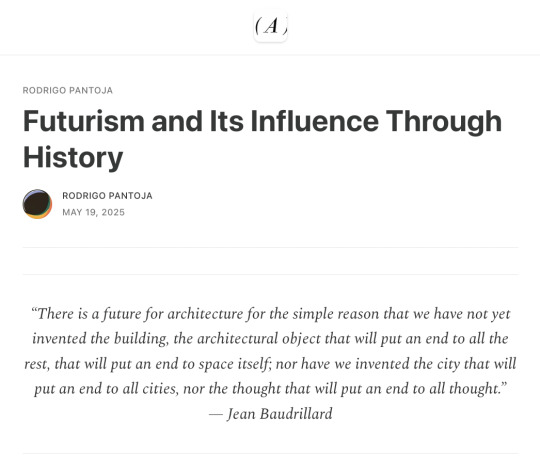
What does the future of architecture look like—& how did thinkers like Sant’Elia, Archigram, & the Metabolists shape it? Explore radical visions, forgotten manifestos, and unbuilt dreams in my latest piece on Substack.
https://substack.com/home/post/p-163928139…
#Futurism#ArchitecturalHistory#FutureOfArchitecture#SantElia#Archigram#Metabolists#ModernArchitecture#VisionaryArchitecture#UrbanFutures#ArchitectureSubstack#arquitectura#architecture#evolabarquitectura#landscapearchitecture
0 notes
Text
Toward an Architecture Without Style
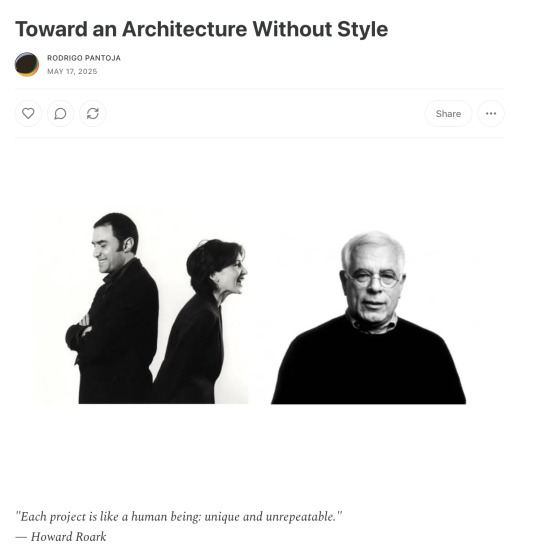
Is “style” limiting architecture?
In my revised article, I explore why architecture must evolve beyond aesthetic repetition and how innovation, ecology, and responsibility must guide our designs.
https://evoalab.substack.com/p/toward-an-architecture-without-style…
#ArchitectureWithoutStyle#FutureOfArchitecture#architecture#arquitectura#evolabarquitectura#evolab#mexicanarchitecture#arquitecturamexicana#landscapearchitecture
0 notes
Text
Landscape Architecture in Mexico: Tradition and Modernity
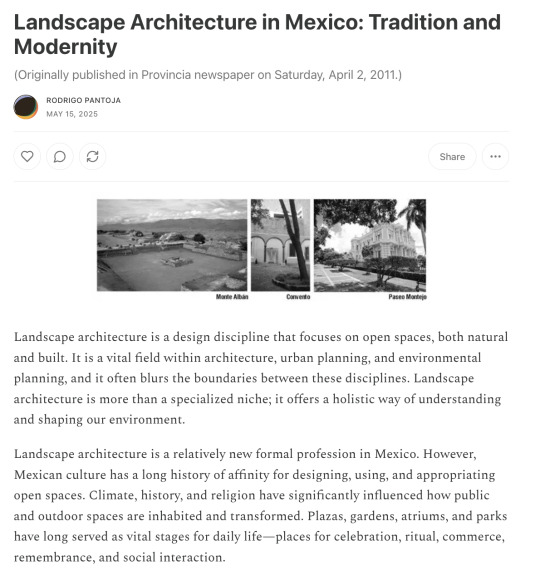
Did you know Mexico’s landscape architecture blends ancient wisdom, colonial influence & French urban ideals?
Discover how open spaces shape our cities & culture. Read, reflect & join the conversation
https://evoalab.substack.com/p/landscape-architecture-in-mexico
#landscapearchitecture#urbandesign#arquitecturamexicana#publicspaces#CiudadViva#architecture#arquitectura#evolabarquitectura#evolab#mexicanarchitecture#paisajismo
0 notes
Text
Paisajes Regenerativos

Agradezco profundamente a Celia Granados y Luis Jacobo Villafuerte por la invitación a participar como asesor y evaluador de los proyectos del Centro Interpretativo y de Formación Ambiental en San Jerónimo Purenchécuaro, en el marco del Taller Interdisciplinar II de Diseño de Paisajes Regenerativos de la FAUM Facultad de Arquitectura de Universidad Michoacana de San Nicolás de Hidalgo - UMSNH
Este esfuerzo colaborativo incluye a la Secretaría del Medio Ambiente de Michoacán, la Facultad de Biología, el Laboratorio de Biología Acuática y, por supuesto, a la comunidad de San Jerónimo, cuya participación es clave en la construcción de propuestas con sentido territorial y regenerativo. ¡Gracias!
@evo-a-lab
#paisajeregenerativo#arquitecturadelpaisaje#SolucionesbasadasenlaNaturaleza#SanJuanPurenchécuaro#UMSNH#sostenibilidad#ecología#tallerinterdisciplinar#DiseñoRegenerativo#evolab#arquitectura#evolabarquitectura#mexicanarchitecture#arquitecturamexicana#paisajismo#landscapearchitecture
0 notes
Text
Morelia, formerly known as Valladolid

Morelia’s historic beauty hides deep urban inequality. While its center is preserved like a stage set, its periphery is neglected. Architecture must heal, not just decorate.
#UrbanJustice#Morelia#Architecture#arquitectura#evolabarquitectura#evolab#mexicanarchitecture#arquitecturamexicana#paisajismo#landscapearchitecture
2 notes
·
View notes
Text
The Water Cycle in the Urban Landscape.
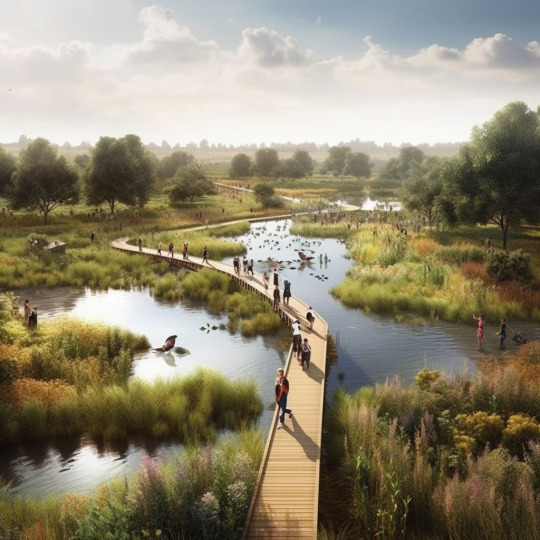
From the sky to the ground, we need to rethink the city as a living sponge. This approach embraces rainfall not as a threat, but as a resource. Through nature-based solutions such as permeable surfaces, green roofs, infiltration zones, and rainwater harvesting systems, we will create resilient cities that absorb, store, and reuse water sustainably.
#cityassponge#urbanhydrology#landscapearchitecture#SustainableCities#greeninfrastructure#NatureBasedSolutions#resilientdesign#RainwaterHarvesting#ClimateAdaptation#ecologicalurbanism#watersensitivedesign#urbanlandscape#spongecityy#bluegreeninfrastructure#CircularWater
0 notes
Text
Time and Pulque… or Architecture and Its Processes

(Originally published in Spanish in 2007). https://evoalab.substack.com/p/time-and-pulque-or-architecture-and
By Rodrigo Pantoja-Calderón
1. Pulque: an ancestral alcoholic beverage made from the fermented juice of the maguey plant.
Pulque, a traditional drink from Mesoamerica, is produced through the fermentation of aguamiel, the sweet sap extracted from the maguey plant. A cavity would be carved into the plant, and the liquid would be collected daily for approximately two months. In pre-Hispanic times, pulque held ceremonial significance; it was consumed by priests who, through it, clarified the messages of the gods. In the current business environment, few are willing to wait that long. The need to commercialize has led to significant changes in the way it is prepared. The process is now accelerated using industrial yeasts or, more controversially, with aggressive agents like excrement to hasten fermentation and force decomposition. Indeed, the subject is excrement.
Contemporary architecture appears to be experiencing a comparable crisis. Our discipline has lost value and credibility, largely due to the abandonment of thoughtful processes in favor of an increasingly impatient marketplace. The eagerness to speed things up has unfortunately turned architecture into an instant product: shallow, thoughtless, devoid of depth and intention.
A true process allows knowledge to accumulate, complexity to unfold organically, and the final result to acquire layers of meaning. The true value of a project is derived not from a transient flash of inspiration, but from the meticulous and methodical process through which it is refined. Authenticity and value are forged in the time it takes for a project to mature.
The quality of a building's architecture is determined by the depth of research that went into its design, the deliberate creativity that guided its design, and the constant reflection that shapes its identity. The process does not merely enhance the outcome; it completely transforms it. When we attempt to bypass or preempt this process, we limit our ability to experiment, correct, and innovate. We have chosen to prioritize the use of empty images, nonsensical aesthetics, and recycled formulas over essential exploratory tools. In essence, accelerating natural processes has the effect of reducing the sophistication of architecture.
In the culinary world, the time a dish spends in the oven is as crucial as the ingredients themselves. In the realm of winemaking, the aging process is pivotal in defining the wine's unique character. As one progresses through life, the accumulation of wisdom is a natural consequence. Similarly, the field of architecture requires a period of development, planning, and refinement. It is important to note that shortcuts can only serve to conceal underlying deficiencies. As the saying goes: Rome was not constructed in a single day.
At its most noble, architecture explores metaphysical and existential dimensions. It engages with being, with our relationship to the world, with how we experience space through the senses. It is only through in-depth, creative exploration that we can design environments that truly resonate with us, inspire us, and enhance our sense of connection to our human experience. Instant architecture is not capable of poetic expression and barely qualifies as building. This approach often results in a costume that is frivolous, manierist, superficial, and obsessed with profitability, rather than being transcendent.
When the creative process is rushed, it often leads to the replication of past languages and styles without considering new ideas or innovations. This can hinder progress and prevent meaningful contributions to the development of new languages and styles. For investors, time is a valuable resource. For creatives, it is their most important asset. A word to investors: in the long run, good design yields better financial returns. The emphasis is on quality over quantity.
Pre-Hispanic, Egyptian, Greek, Roman architectures have withstood the test of time because they were the result of rigorous processes, constant transformation, and relentless questioning. Their evolution necessitated a comprehensive study of materials, construction methods, and both triumphs and failures.
The quality of our product is comparable to that of a fine wine, in that only the best grapes are selected and the product is aged in barrels to enhance its flavor. In the kitchen, for example, a chef requires fresh ingredients, adept skills, and ample time to create a memorable dish. Diners, in turn, learn to wait. To savor. To value. Those unwilling to do so settle for mediocre wine, fast food, and forgettable architecture.
It has been demonstrated that accelerating the process does not necessarily improve the outcome; in fact, it can often compromise the quality of the result. The unfortunate result is that, much like substandard pulque made with excrement, we are left with subpar architecture.
#ArchitectureCriticism#SlowArchitecture#ArchitecturalProcess#ArchitecturalCraft#DesignWithPurpose#RedifiningArchitecture#TimelessArchitecture#Architecture#CultureAndConstruction#sustainabledesign#PulqueAndArchitecture#evolab#evolabarquitectura#arquitectura#mexicanarchitecture#paisajismo
0 notes
Text
New approaches to Sustainable Cities.

(Originally published in Spanish in 2013. https://evoalab.substack.com/p/new-approaches-to-sustainable-cities)
In a report published in 2007, the United Nations warned that half of the world's population was already living in urban environments.
While cities are centers of innovation and development, they are also perceived by many as polluted, unequal and overcrowded. The larger the city, the more complex it becomes, and often the greater the deprivation. By 2015, there are expected to be 22 "megacities" with more than ten million inhabitants, and at least 61 cities with populations approaching five million.
This reality raises fundamental questions: Is our planet ready for the so-called "Urban Age"? Do urban planners, landscape architects, developers, governments and citizens have the right tools and strategies to enable a positive transformation of our cities? Unfortunately, in most cases, the answer is no.
Without a clear vision, a strategic plan, and effective implementation, cities risk a drastic decline in the quality of life for their residents. In his book City Building, architect John Lund Kriken proposes essential principles for designing cities that are more equitable, competitive, and sustainable. Among these principles are:
Sustainability: Focuses on the conservation and protection of natural resources. Air, water, and soil quality are vital for public health and productivity.
Accessibility: Promotes the exchange of goods, services, ideas, and opportunities through connected and equitable infrastructure.
Diversity: Encourages a mix of uses, amenities, and experiences in the built environment, strengthening urban vitality.
Open spaces: Foster social interaction, recreation, and ecological regeneration.
Incentives: Stimulate the rehabilitation of deteriorated areas, turning abandonment into opportunity.
Adaptability: Enables the transformation of spaces with flexibility, efficiency, and low cost, in response to society’s evolving needs.
Density: Compact cities concentrate housing, jobs, and services, optimizing resources and reducing unnecessary commuting.
Identity: Preserves and enhances each city’s unique character, highlighting its natural, cultural, and historical heritage.
Applying these principles consciously is essential to achieving a balance between economic, environmental, and social goals. Today, more than ever, we must rethink our cities with new perspectives.
The challenge of building sustainable cities is not solely the responsibility of experts or authorities: it is a shared commitment. Urban planners, governments, developers, and citizens must collaborate to create resilient, healthy environments that offer quality of life for all. Adopting holistic and visionary approaches, like those proposed by John Lund Kriken, is an opportunity to transform our cities into more humane, equitable, and future-ready spaces. Urban sustainability is not a choice—it is an urgent necessity of our time.
Rodrigo Pantoja-Calderón
#SustainableCities hashtag#UrbanDesign hashtag#LandscapeArchitecture hashtag#CityPlanning hashtag#ResilientUrbanism hashtag#Architecture hashtag#GreenCities hashtag#PublicSpace hashtag#SubstackWriters#som#Joh LundKriken
0 notes
Text
My new Substack blog
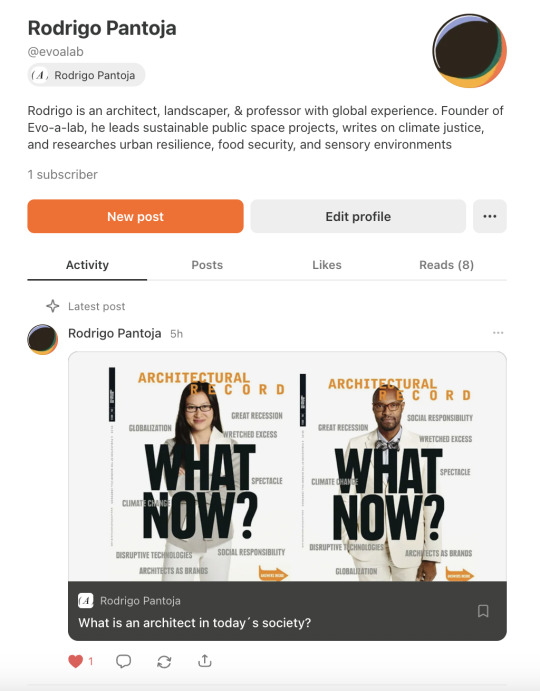
I'm excited to announce the launch of my new Substack blog, where I'll be sharing reflections, research, and explorations on architecture, landscape architecture, and other areas that continue to inspire and challenge my thinking.
To begin, I’ll be republishing a selection of past newspaper articles, essays, academic papers, and personal reflections—pieces that have shaped my journey and continue to resonate. These will lay the groundwork for new, timely writings that I look forward to sharing soon.
The first post is titled “What is an Architect in Today’s Society?” Originally published in 2011, this article still raises questions that I believe are vital to the profession and its role in an evolving world.
Read it here: https://evoalab.substack.com/.../what-is-an-architect-in...
Please feel free to follow or subscribe to my blog—I’ll be more than happy to read your comments and start an engaging conversation. https://substack.com/@evoalab
#ArchitectureMatters#LandscapeArchitecture#ArchitecturalThinking#SubstackWriters#DesignAndSociety#BuiltEnvironment#CriticalPractice#ArchitecturalReflections#UrbanThoughts#arquitectura#evolabarquitectura#evolab#mexicanarchitecture#arquitecturamexicana#paisajismo#architecture
0 notes
Text
Living Lab
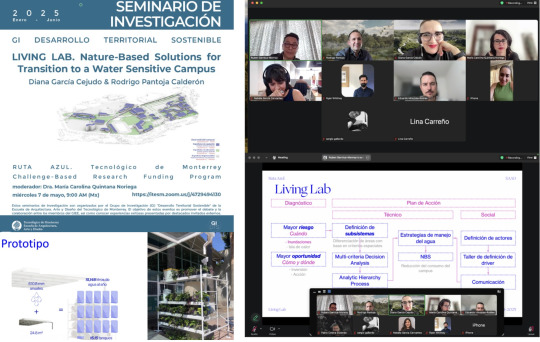
Con gran entusiasmo, el pasado miércoles 7 de mayo compartimos los avances de nuestra investigación “Living Lab: Nature-Based Solutions for the Transition to a Water Sensitive Campus”, cuyo objetivo es reducir en un 20% el consumo de agua en el Tecnológico de Monterrey, Campus Querétaro, en el marco de la Convocatoria Ruta Azul.
Fue un verdadero privilegio presentar este proyecto en colaboración con mis colegas Rubén Garnica, Viviana Barquero y Diana Garcia, y contar con la acertada moderación de la Dra. María Carolina Quintana María Carolina Quintana Noriega.
Agradezco profundamente las valiosas contribuciones del equipo ampliado: Miguel Anaya Díaz, Dany Cn, Claudia Martínez, Luisa Medina y Sergio Rodriguez, así como el acompañamiento y las enriquecedoras sugerencias de los consultores del Centro de Estudios Ambientales y Urbanos urbam EAFITi de la Colombia. Universidad EAFIT en Medellín, Colombia.
La presentación ante el Grupo de Investigación en Desarrollo Territorial Sostenible nos permitió recibir una retroalimentación crítica y propositiva, que sin duda fortalecerá nuestra metodología y enriquecerá la narrativa del proyecto, con miras a implementar estrategias replicables, medibles y orientadas a una transformación sostenible real.
#NatureBasedSolutions#WSC#livinglab#arquitecturadelpaisaje#UrbanismoSostenible#InnovaciónAmbiental#SolucionesbasadasenlaNaturaleza#WaterSensitive#arquitectura#arquitecturamexicana#evolab#evolabarquitectura#paisajismo#landscapearchitecture
0 notes
Text
What is an architect in today´s society?

(Text written in 2011 for the New York League of Architecture Open Call: "it's different").
“Hundred years ago, all architecture could be held in the intelligence of a single maker, the master builder. Part architect, part builder, part product designer, and building engineer, and part materials scientist, the master builder integrated all the elements of architecture in a single mind, heart, and hand.”(1)
Renaissance architect Filippo Brunelleschi is the perfect example of a master builder. He had direct responsibility of making the dome of Santa Maria del Fiore in Florence, Italy. His innovations cut across the fields of architecture, industrial design (produced his own tools such as an unprecedented screw jack and lifts), structural research, construction processes and material exploration.
During modernism, the profession of architecture specialized in various elements; architects, consultants, contractors, engineers, educators, providers, urban planners, etc. The multiple foci of the discipline only fragmented architecture in an advancing world, making “appearance” and “form” the only quest in the profession.
At the peak of modernism, Le Corbuiser, the Congrès Internationaux de l´Architecture Moderne (CIAM) and “The Charter of Athens had separated urban function into broad division of living, working, leisure and circulation.”(2) This new version of the city as a park filled with objects never took in consideration sociological, economical and environmental components. Space and appearance triumphed over substance.
In contemporary times, we have inherited these fallacies. As architects, we have ignored the reality of our world: poverty, globalization, climate change, climate justice, and social responsibility. Some Cities have become places for spectacle and consumption, while others are ignored by architects because of their lack of glamour or limited financial resources. For instance, “The Olympic Stadium in Beijing serves little purpose these days and is acquiring a reputation of being more White Elephant than Bird´s nest.” (3)
“In fact, most media produce a false sense of wellness, an artificial impression of the world of architecture and design, a world with an endless budget, perfect clients a timeless schedule. Welcome to the real world? No, this is NOT the world we live in.” (4) The world of architecture has grown wasteful, splintered, disposable and fragmented.
As a result, architects today need to understand the complexity of our world and engage the profession constructively. It is not only necessary to become a “master-architect” like Brunelleschi did, but to become an Architect “All-field”, “All-terrain”, “Off-road”; Arquitecto Todoterreno.
Architects today must be involved in the academia, in the construction process, doing material research and product design or even become activist. We must explore deeper into what lies beyond mere looks –to see how we accomplish things, not merely what they appear to be. Architects must work in teams integrating sociologists, artists, craftsmen, historians, ecologists, administrators, city officials; solving real daily problems, not only fashionable projects for the privilege.
It is a call-for action for architects and city builders to take part in the re-construction of a more equitable and sustainable world. In recent years, very few architects engaged projects that dealt with scarcity, natural disasters, poverty, and war exposing a different type of practice.
Times have changed, and the profession of architecture needs to be redefined. Architectural Record Magazine clearly provokes people in its January 2011 front cover by asking, “What now?”(5). In the past, people and the media put too much emphasis on buildings and their creators. The world does not need more designers concerned only with stylistic agendas, but interdisciplinary teams of people working towards socio-cultural issues, environmental projects, and economically constructive proposals that transform lives.
The new role of designers is to be reflective individuals that search with conviction and work with responsibility to improve the quality of life of the local and global communities. The work of architecture must be based on the application of methodologies, analysis, critical thinking and careful experimentation avoiding intuitive egotistic proposals. The new role of designer is to be a diverse architect that produces a variety of works and scales always searching for inventive -yet practical- proposals turning the very constraints into a design philosophy. The world needs real solutions, not fashionable and socially restrictive designs. It’s different now.
Most architects have abandoned less profitable and ordinary projects only focusing on the spectacular, when in reality the “normal” projects have much deeper impact on humanity. Architects that deal with real constraints are the new heroes.
“Understanding the impacts of demographic growth on the environment has become a necessity, as the links between architecture and society become both more complex and more fragile. How we choose to shape our cities, buildings and public spaces, will determine how we respond to the challenges as well as addressing human rights, justice, and dignity for the billions of people who move to cities in search of work and opportunity.” We live in a continually transforming society, where the status quo constantly evolves. It’s different now.
[1] Kieran, S and Timberlake, J. Re-fabricating Architecture: How Manufacturing Methodologies Are Poised to Transform Building Construction.
[2] Curtis, W. Modern Architecture since 1900. Ed. Phaidon, London. 3rd Edition, 1996.
[3] Burdett, Richard. Cities, Architectutre and Society. 10. Mostra Internazionale di Architettura. La Biennale di Venezia. Ed. Marsilio, Italy. 2006
[4] Grellner, J. Evoltion Five-twenty. Senior Seminar. Drury University. December 2003. Springfield, MO
[5] Pearson, C. What Now? Architecture at a Crossroads. Architectural Record. January 2011. Pg. 51-60 Ed. McGraw, USA”
#FutureOfArchitecture#ArchitectureCriticism#ActivistArchitecture#SustainableDesign#RedefiningArchitecture#evolabarquitectura#evolab#mexicanarchitecture#architecture#landscapearchitecture
0 notes